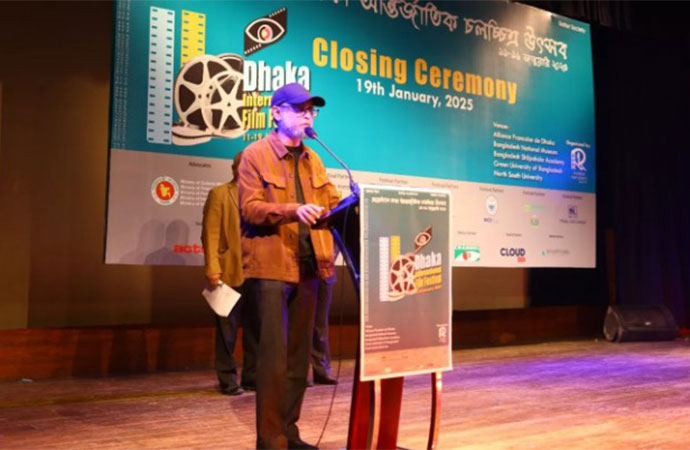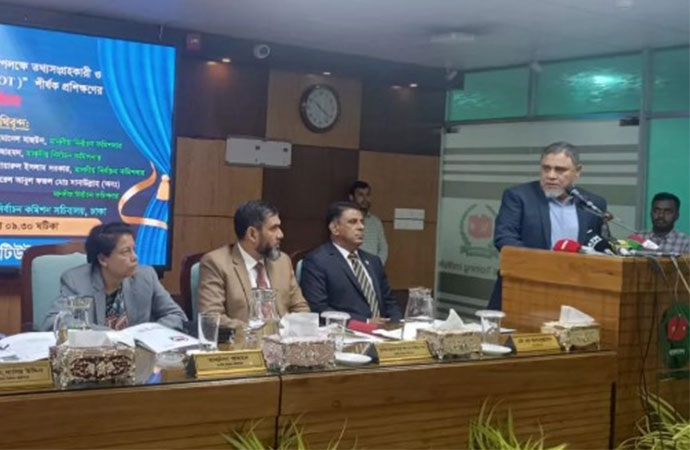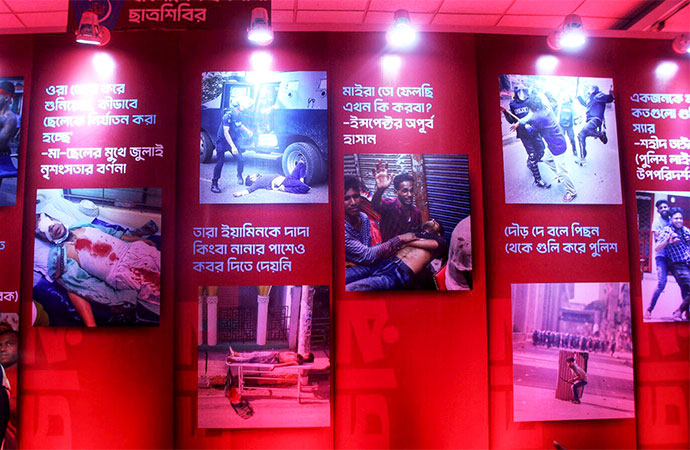Business

Photo: Collected
The work of Firoz Hasan illustrates the aesthetics of need quite literally. Dispossession is not only a fact of economic life but of learned expectations of the aesthetic life. The domesticated eye rises effortlessly to catch a glimpse of the height of a skyscraper or the gradient of a flyover at the price of overlooking the austere expanse of slums surrounding the architecture of success. No middle-class aesthete would survive his conscience for a day without making poverty socially invisible.
However, invisibility possesses a feral integrity whose provocative power, once rescued from the blind indolence of habit, challenges ways of seeing and, therefore, ways of being. Hasan, a young Bangladeshi videographer, seeks to excavate the lives of the poor from the anonymity of street life. He recovers for them and restores to them the visual unity of form and content whose seamless dignity may yet contour a new aesthetic structuring of the senses.
Since the existence of the unwanted poor grates on the imbibed sensibilities that have long appropriated art into a vicarious celebration of middle-class existence, it is only by unpacking the act of seeing that the economic outsider may be admitted into a new agora of being in which the materiality of unknown others re-conditions the premises of aesthetic experience.
Hasan's Youtube videos capture a long moment in the visual life of Bangladesh. They rouse the auditory imagination of viewers as well into recognition of Bangla as the mother tongue of a national being. The Bangla of Hasan's streets is not the refined language of professors or poets or lovers: It is the raucous, in-your-face Bangla of the urban wilderness drawn from the dialectal and idiomatic inflections of rural Bangladesh. In Hasan's videos, no one speaks proper Bangla, whatever that means.
The localised "impropriety" of his Bangla is shot through and through with an authentic materialism in which sentences are short and sentiments are brief. Language serves as a shorthand of necessity, not an elaboration of reality.
Take Kulsum of the Launch Ghat. The little girl lives by herself after her father died and her mother abandoned her to remarry. She begs for a living.
Hasan draws Kulsum out of her ignored self, which is used to passing pity at best and rude dismissal at worst, to ask how she lives and what she wants. He wipes away the tears of an orphaned childhood as he encourages her to break out of the circumstances of her birth and take her place in a universe of possibilities, here and now.
Once Hasan has overcome Kulsum's fears of having met a predator in a friend's disguise and convinced her that he is like an elder brother, he asks her how much she wants for a meal. Five taka, she says. He opens her clenched fist: She has 12 taka. What would 17 taka buy her? This is the innocence of a little poor girl. It is matched only by the innocence of her large eyes, expansive enough to turn everyone chaste between the Padma and the Bhagirathi. Kulsum is an everyday emblem of the Bangladeshi realm.
The Youtube episode includes her sudden benefactor buying her new clothes and shoes. Those gifts are not very important: They will wear out in time. What matters is how Kulsum, who was accustomed to being silent unless she was importuning passersby, trots out of her staccato self to restructure her broken life into bolder patterns of linguistic and visual companionship: a louder voice here and one impassioned plea for a toy there. A redemptive aesthetics of need drapes itself around this moon-shaped girl of Bengal. To see her is to be a better Bengali than before.
There is another Kulsum, a 10-year-old in Chandpur who works in the tukai trade. Seeing her pull a heavy cart laden with the goods that she collected that day, Hasan engages her in conversation. She refuses to accept any money initially because, she says, his care and concern for her are sufficient rewards. She is a poor girl to whom no one speaks.
Communication as the first step to communion -- Bangla the language as the primary medium of affiliation with Bangladesh the nation -- is seen in Hasan's engagement with Hashi, who sells flowers on the street. She is shy, but her playful eyes brim with infectious mischief. Her Bangla of laughter and banter, reciprocated by her interlocutor, is a lesson in the social possibilities of a shared tongue.
She waves to him as he leaves with a gracefully wistful turn of the head. He may not buy her flowers any more, but her gestural spontaneity wishes him well on his quest for companionship with others on his motorcycle's travels through the winding annals of Bangladeshi time.
Each of Hasan's interviews tells a slightly different story, but their narrative resonance gains structural power from a collective agency: the chance meeting of eager lives that will continue to be lived in the light of a memory captured in the public sphere for the time being.
Hasan befriends Sajib and Keshab, two small boys who sell chips from a "shop" on a tree. They tell him their story. A frightened old lady tries to flee the motorcyclist, but he stops her to place his palms together in an offering of trust. Khala grasps them with her hands. Her story follows.
Middle-aged men, too, find their place in Hasan's story. They hardly have space in the protective sanctuaries available, if at all, to other vulnerable humans: children, women and the aged. Yet, they, too, are a part of the shared flow of life. To capture their being in words and motion is to respect the integrity of all humans as a necessary part of a single tapestry of life.
In video after video, Hasan the participant observer stays hidden from view. In the act of keeping himself out of sight, he foregrounds the semiotic urgency of the times. By minimising his own role as a signifier, an agent who imparts meaning to circumstance, he allows the sign (need) to find a home in the signified (the video viewers' rejection of poverty as a natural state of being). Hasan is not the Odysseus of this Odyssey: He is merely Homer. His ideological modesty is important when, across the world, inequality works by privileging power and wealth as not only inevitable but necessary.
For an expatriate West Bengali like me, Hasan's videographic art represents a dual recovery. One is reconnection with a Bengal lost to Partition. In his art, I see Opaar Bangla refracted through the Epaar Bangla where Kulsum was Kamini, Banani (perhaps) was Bagbazar, and taka was taka. I grew up among the unwanted of Kolkata. When I escaped from them, I stole the sights and sounds of their being to preserve the Bengali in me.
The second recovery is larger. Hasan's reformative lenses reflect the enduring agency of a rehabilitative humanism which can measure up to the radical epistemology of Edward Said's claim that "history is made by men and women, just as it can also be unmade and rewritten". I would add: "seen and heard". By privileging the unseen and the unheard, Hasan celebrates the spartan yet enticing reality of the other Bangladesh -- one without which the known land would be incomplete.
The writer lives in Singapore.E-mail: badiarghat@gmail.com

























Leave a Comment
Recent Posts
Showcasing tradition, creative ...
With a commitment to reviving traditional crafts and fostering creativ ...
Gallery Cosmos hosts special s ...
Celebrating a vibrant winter evening of cinematic art and storytelling ...
Logic of interdependence, mutual benefit to keep gui ..
The most important deliverable on the IG’s plate
All 64 people aboard an American Airlines jet were k ..
Tensions between Dhaka University and its seven affi ..